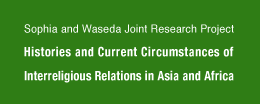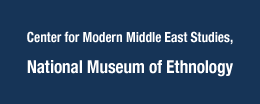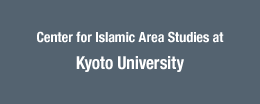Congress
Report No.2 of Congress / WOCMES Seville 2018 (Fifth World Congress for Middle Eastern Studies) (Mon, 16 - Sun, 22 July. 2018, Seville)
《PA-187》 Religious Practices Using Commodities in Consumer Societies.
【Organizer】FUTATSUYAMA Tatsuro (St. Agnes’ University)
【Date & Time】July 18th, 2018, Wednesday, 17:00~19:00
【Venue】Seville University
【Presenters】
KONDO Fumiya (Sophia University): Mawlids and “Mawlid Sweets” in Contemporary Egypt: Festivities beyond a Specific Time and Space.
FUTATSUYAMA Tatsuro (St. Agnes' University): Qur’ānic Commodities in Ordinary Muslims’Space: Focusing on Interior Ornaments and Calendars in Tunisia'
KOMAKI Sachiyo (Takasaki City University of Economics): The Cult of Islamic Relics and the Religious Goods in Contemporary India
FUJIWARA Kuniko (Koshien University): Holy Water for a Subtle Flavor in Cooking and Relationships: Dimensions of Daily Consumption of Religious Materials in Catholic Malta
KONDO Fumiya (Sophia University)
He reported on “mawlid” that refers to festivities in honor of the prophet and saints in Egypt. Many scholars have focused on its aspect as a ritual conducted by Sufis during the prophet’s mawlid in Egypt, and their interpretations of mawlid have been confined to just casual events with limited time and space for its festivity. However, by shedding a light on a distribution process including production, marketing, and consumption of arusa (bride) dolls, Kondo indicated a new aspect of mawlid with a longer-term and wider-space festivity.
FUTATSUYAMA Tatsuro (St. Agnes' University)He presented a study about calendars with Qur'anic verses in Douz, Tunisia. He pointed out that the majority of the calendars at the research site were the Quran calendars using Qur'anic decorations. From his observations, Futatsuyama clarified that one of the reasons why informants selected them was that these Qur'an Calendar were distributed for free by various companies as advertisements. In addition, he explained in details as to how these Quranic calendars were produced in his research site.
Second, Futatsuyama pointed out that it was prohibited to abandon these Qur'anic calendars. However, since these Quranic calendars are distributed every year, they naturally continue to increase in number. It was observed that people tried to keep only Qur’anic verses while throwing advertisement parts.
During the question and answer session, a question was asked: do not the local people really abandon those Qur’anic calendars, including the decoration?
She reported on the increasing and diversifying religious goods that have been sold in India over the last 20 years. In the case 1 for the Prophet’s mawlid in the mosque of Saint Hzrat Nizamuddin, it was pointed out that more religious goods are being sold in recent years. In the case 2 in the Muinuddin Chishti mosque, it was stated that a hair as a sacred relic was newly added in the 2000s.
Behind s such a diversification of religious goods including adoration of sacred relics, there exist several situations: rising Hindu nationalism that is accompanied by increasing Hindu religious goods, emerging influences of Taliban, economic liberalization, the development of reproduction technology by a wider use of computers, and so on.
It was also indicated that some of these new religious goods have a motif based on the photograph book of an exhibition at Topkapi Palace in Turkey. Most of these goods are produced in China, and some go to China to buy these goods several times a year.
Finally, Komaki stated that the prosperity of mawlid in the mosques of cases 1 and 2 could be understood to fit the needs of those inspired by those religious goods.
She reported on the evil eye and the holy water of the catholic in modern Malta. First, Fujiwara pointed out that New Age's spiritualism was a subject of contemporary Catholicism and that the Deliverance, a kind of Exorcism, dealt with it. In addition, it was believed that certain people such as witches had evil eye. However, in recent years, everyone is able to exercise it by the devil, some believe. This means that victims of evil vision can also be perpetrators. Therefore, holy water became popular in various scenes such as homes against evil eye.
From the above cases, Fujiwara indicated that there was a twisted tendency of secular consumption of religious objects.
(Reported by KONDO Fumiya, Sophia University)








